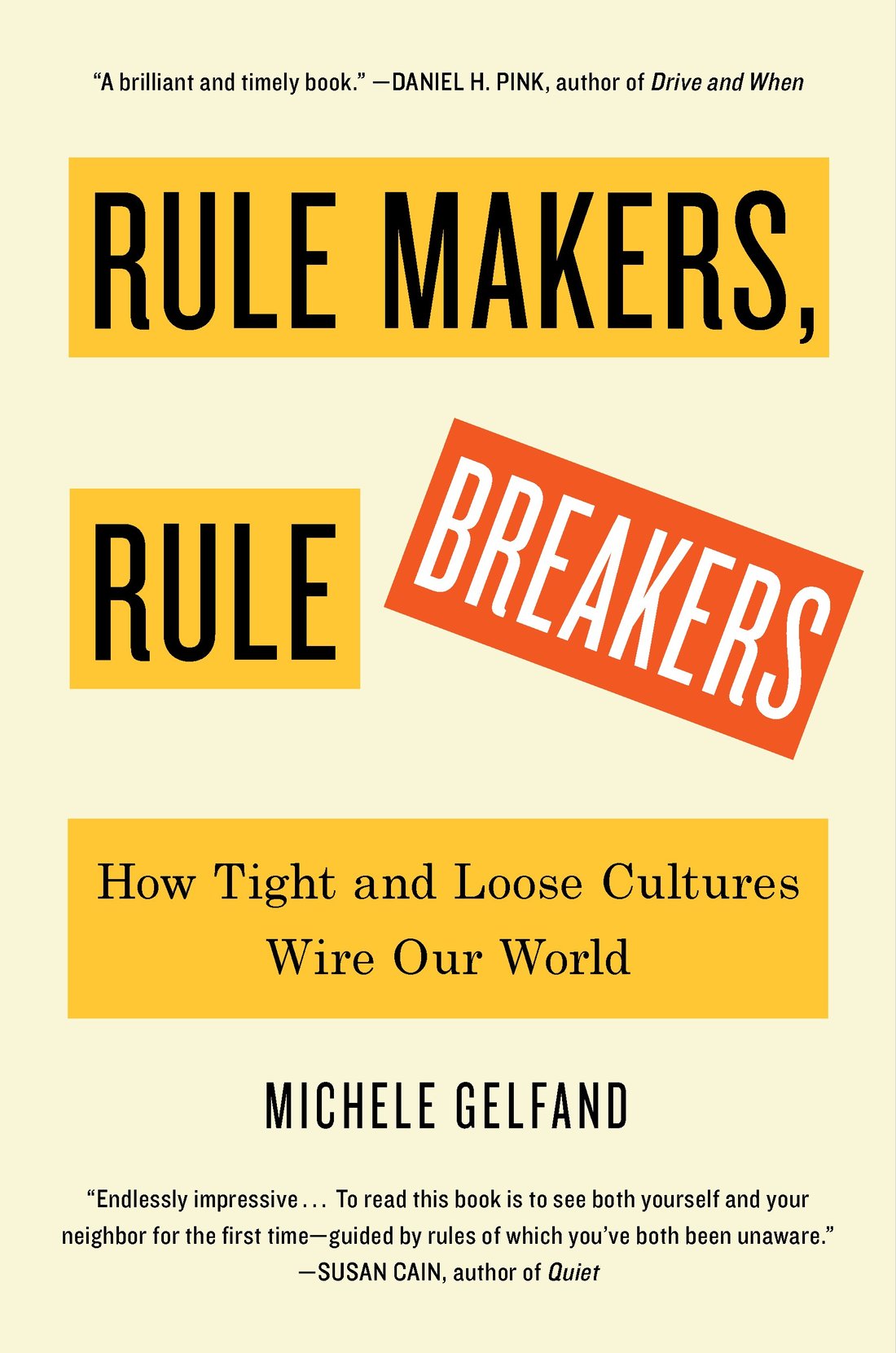
|
我们每天的很多时间是在单位度过的,但我们很少认真思考那些指导我们职场行为的文化基因。单位的管理也是有松紧之分的。有些单位管理得很紧,对不服从管理的员工有很多严格的规定和惩罚措施。还有些单位管理得比较松散,对员工比较宽容,规则也更少些。 一个单位的管理风格是松是紧,往往是由现实条件决定的。有些行业面临着比较大的危险,因而需要无缝的协调。比如核电站、医院、航空公司、警务部门和建筑行业,这些行业的风险很高,有时甚至是生死攸关的风险,所以他们给员工制定了很多必须遵守的规定。 与法律法规有关行业往往也管理得比较严,比如律师、审计师、银行业和政府机关等等,他们面临着很高的职业责任,还有很多合规监督流程。 管理上比较松散的单位,往往是那些面临的威胁不大,且严肃性不高、流动性和多样性比较强的小型工作团体。比如设计、咨询和高科技行业。在这些地方,战略的快速调整是非常重要的。所以必须要有一定的自由度,让员工能跳出条条框框去思考和完成工作。 虽然各个单位在管理的松紧程度上各有偏好,但这也并非是一成不变的,还有些单位在管理上是外紧内松或外松内紧,有些单位在某些时候甚至会彻底改变管理风格。这些都是由客户、市场和利益相关人的不断变化造成的——有时也是因为糟糕的公关事件。有些企业可能确实适合严格的管理风格,但这些企业的领导也必须知道,在情形允许的时候,如何给予员工更高的自由度。反过来说,像特斯拉这样管理较为松散的企业,如何知道何时和如何引入更强势的规章制度,也会让企业更加受益。 现在,很多企业都倾向于建立张弛有度的管理氛围。这样的公司在管理上,有可能是外紧内松,有可能是外松内紧,但在必要的时候,他们也能够吸取对方之所长。当一个管理较为松散的单位引入一些严格的管理措施时,我称之为“有结构的松散”。反之,在一个管理较为严格的单位营造某种让人放松的状态,我称之为“灵活的紧张”。 |
We spend many of our waking hours in organizations, but we rarely think about the underlying cultural DNA that is guiding our behavior at work. Some organizations are tight—they have many strict rules and penalties for members who don’t obey them. Other organizations are loose—they’re more permissive and have fewer rules to abide by. The level of tightness-looseness in organizations tends to evolve for good reasons. Tightness abounds in industries that face threat and need seamless coordination. Think nuclear power plants, hospitals, airlines, police departments, and construction—they develop a lot of rules due to their life-or-death stakes. Occupations that are accountable to laws and regulations also tend to be tight. Think lawyers, auditors, bankers, and government officials, who are bound to high standards of professional accountability and have a lot of compliance monitoring. Loose organizations have much less threat and are characterized by highly informal, mobile, and diverse work groups. Think design, consulting, and high tech, where it’s critical to change gears quickly, have latitude, and think outside the box to get the job done. While companies and units within companies tend to veer tight or loose, tightness-looseness in organizations is continuously renegotiated, contested, and sometimes totally altered, due to the ever-changing nature of customers, markets, stakeholders, and clients—not to mention bad PR. For example, some businesses, like United, may indeed operate best under tight conditions, but these companies’ leaders need to know when and how to give employees more latitude when the situation warrants it. At the same time, loose businesses, such as Tesla, would benefit from knowing when and how to insert stronger norms into their daily practices. Many companies today are striving to develop tight-loose ambidexterity. A culturally ambidextrous company may favor tight over loose norms, even designating one as its dominant culture, while being capable of deploying the opposite set of norms when necessary. When already loose organizations insert some tight features into their daily operations, I call this structured looseness. On the flip side, steering a tight organizational culture into a looser state is what I refer to as flexible tightness. |

|
那么,企业文化如何做到更加张弛有度呢?实际上,无论变化多么微小,企业文化的变革都是一件不容易的事。全球某知名办公家具制造企业的一位高管曾向我讲过,他们公司在引入轻松氛围时遇到的重重挑战。多年以来,该公司采取的都是严格的管理文化,但调查显示,很多员工觉得被绩效评估体系压得喘不过气来——各种规章制度、季度考核、员工评级、目标绩效和文件指令很容易让人产生窒息感。很多员工觉得难以满足这么多的预期,因此效率日益下降。 第一次,为了营造外松内紧的文化,公司的人力资源部门有些矫枉过正,在评估体系的制定上给予了员工充分的自主权。这种过于松散的模式与公司一贯的严谨文化完全背道而驰,让人们产生了严重的不确定感。 这位高管告诉我:“我们意识到,自由应该是有界限的,我们应该回归到严格一些的文化,但逐渐带来一点宽松。”该公司重新引入了业绩目标和奖励机制,但通过允许员工参与到各个子目标的制定,从而带来了一些灵活性。这个新制度赋予了员工更大的灵活性和能动性,同时也保留了企业偏爱的严格管理文化。 在公司建立松紧结合、张驰有度的文化过程中,最重要的是,企业的领导者一定要支持这些新举措。 以USAToday.com的上线为例:1995年,为了赶上媒体行业的数字化浪潮,时任《今日美国》董事长兼出品人的汤姆·柯利准备把该公司的纸媒业务搬到网上去。他聘请了新的高管,建立了一个管理环境比传统新闻业宽松得多的新部门。他把自己的愿景传达给了纸媒部门的领导者,并且让那些不买账的高管统统走路了。 这种雷厉风行的举措,在领导层中形成了“统一战线和一致目标”。《领导与颠覆》一书作者迈克尔·图什曼认为,这一点对于任何组织变革都是至关重要的。为了打消新生网络媒体和传统纸媒之间的相互疑虑,柯利努力促进网媒与纸媒之间的沟通协作。他要求网络媒体、印刷媒体和电视部门的负责人都要参加每天的编辑会议,分享彼此的想法,选择最好的新闻故事,并建立一个有凝聚力的战略。他还建立了一项跨部门的奖金制度,无论任何部门只要达到了目标都可以拿到这笔奖金。最终,柯利达成了一种有效的平衡,公司真正实现了文化上的张驰有度。 要建立张弛有度的企业文化,是没有一种“屡试不爽”的方法的。有些公司靠的是建立共同目标,让管理严格的部门和松散的部门产生相互尊重。有些公司则是直接将宽松或严格的因素引入现有的管理体系。但不管它是如何完成的,总而言之,企业成功的关键,就是培养张弛有度的二元文化。(财富中文网) 本文作者米歇尔·盖尔芬德是马里兰大学罗伯特史密斯商学院的心理学教授。本文节选自她出版的新书《规则的制定者与破坏者》。这本书于2018年9月11日由斯克里布诺出版社出版。 译者:朴成奎 |
How can organizations become more ambidextrous? It’s not easy, no matter how minor the change. A senior executive at one of the world’s largest manufacturers of office furniture relayed to me the bumpy road the firm took as it tried to loosen up operations. For years it had operated a tight ship, but surveys of salaried employees revealed that they felt the performance appraisal system was overwhelming—full of forms, quarterly evaluations, employee ratings, and explicitly defined objectives attached to stacks of instructional documents. Workers had difficulty meeting these countless expectations, which led to disengagement. In its first attempt at flexible tightness, the company’s HR department adopted an entirely opposite system that gave employees complete freedom to decide how they were going to be evaluated. Such a loose model defied the company’s generally tight culture and made people feel too uncertain. “We realized we have to have some boundaries on this freedom, and return to a tighter culture, but gradually bring in a bit of looseness,” the senior executive told me. The company ultimately reintroduced work objectives and rewards systems, but provided flexible options by allowing employees to participate in customizing sub-goals. The new system gave employees more flexibility and agency while retaining the overall dominant tight culture that they preferred. As companies work toward greater tight-loose ambidexterity, one thing is clear: During these shifts, it’s critical for organizational leaders to embrace the new initiatives. Consider the launch of USAToday.com. In 1995, to keep in step with the news industry’s digital revolution, Tom Curley, then USA Today’s president and publisher, prepared to expand the company’s print media business online. He hired new leadership to create a department that was much looser than traditional newsrooms. He communicated his vision to existing print media leaders and those executives who didn’t buy in to the new vision were swiftly removed or transferred. This created a “united front and consistent message” among the leadership, which Michael Tushman, co-author of Lead and Disrupt, cites as critical for any organizational change. Curley worked toward promoting a collaborative spirit between the new digital division and the old school print division to deal with fears on both sides. He required the unit heads for web, print, and TV to attend daily editorial meetings to share ideas, choose the best stories to feature, and establish a cohesive strategy. He also created an incentive for cooperation—a bonus program that was contingent on all the media divisions hitting their goals. Ultimately, Curley struck an effective tight-loose balance, and the company became truly ambidextrous. There isn’t one best way to develop tight-loose ambidexterity within organizations. Some companies do this by cultivating mutual goals and respect across tight and loose units. Other companies channel more looseness directly into a tight group, or tightness into a loose group. Regardless of how it’s accomplished, the key to organizational success is developing tight-loose ambidexterity. Michele Gelfand is a distinguished professor of psychology and affiliate of the Robert H. Smith School of Business at the University of Maryland. This article is excerpted from her upcoming book, Rule Makers, Rule Breakers: How Tight and Loose Cultures Wire Our World, which will be published on September 11, 2018, by Scribner, a division of Simon & Schuster, Inc. |






